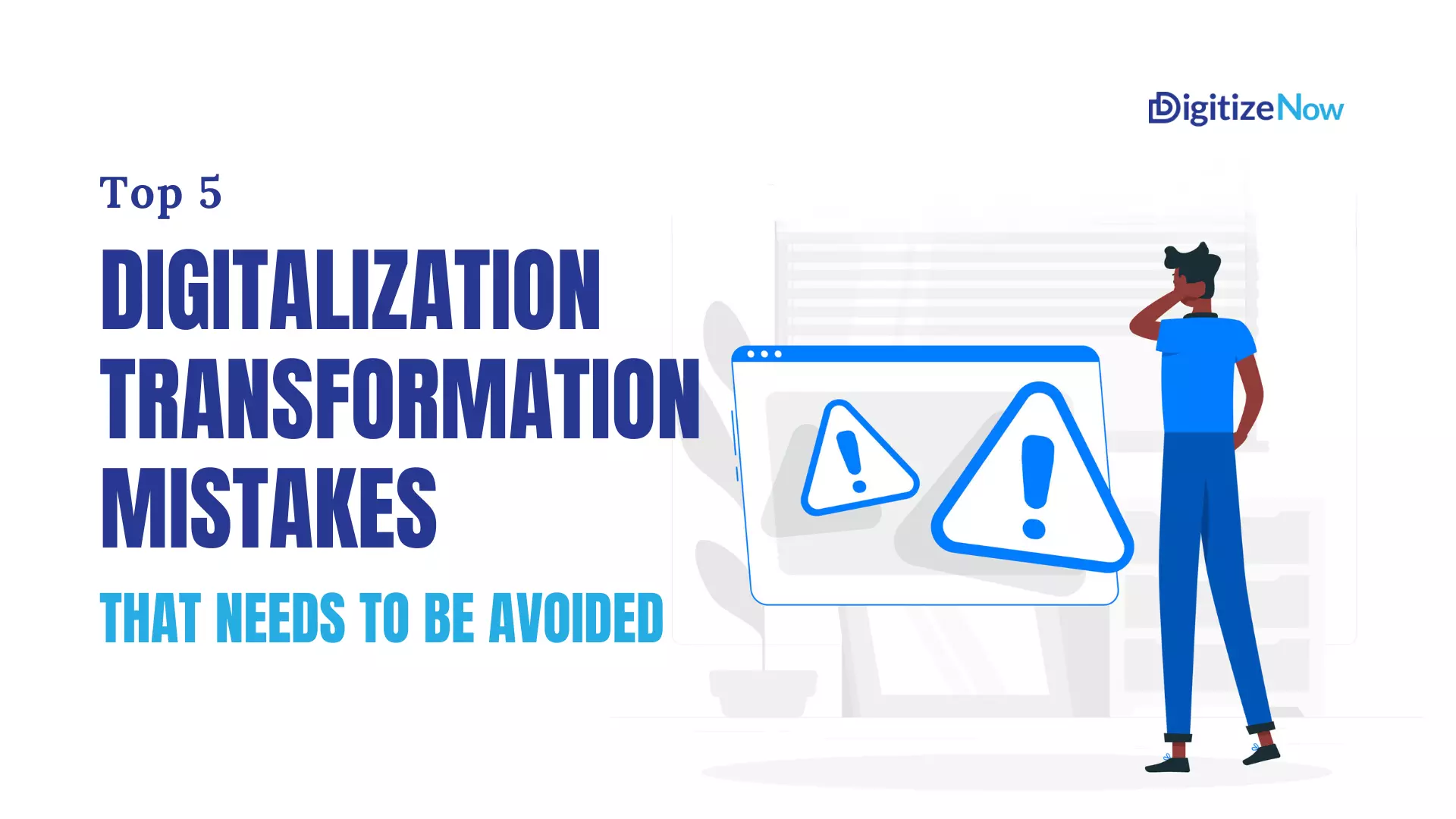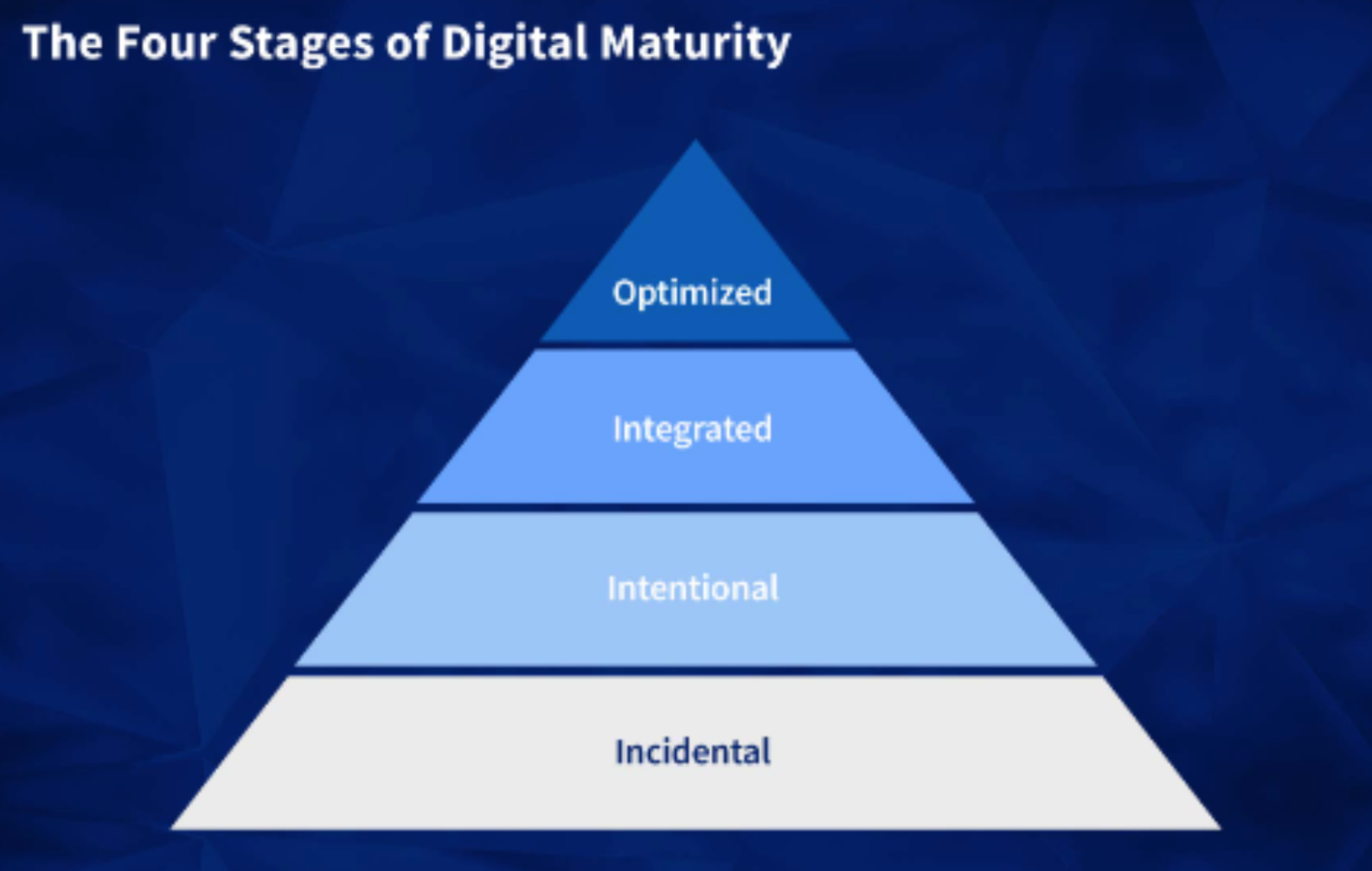The digitalization transformation holds immense power to elevate organizational performance by boosting its efficiency and functionality.
Apparently, this transformation seems like a technological shift, but actually, it is more a strategic change leading to a long-term goal fulfillment. Without a clear vision, the change becomes limited only to the technological zone, and the actual intention behind the change is lost.
That’s why a failed digital transformation backfires and can have catastrophic impacts on the organization.
This blog focusses on the common mistakes made by organizations in the time of digitalization transformation and the ways to avoid each of these mistakes.
1. Weak Change Management: The digitalization transformation creates major changes in the structure and function of any organization. This change needs to be carried out with proper support and guidance to get long-lasting results.
One of the major mistakes made by the organization is not to prepare the team technically and mentally for this change. Many times, the teams are not fully prepared for the change in the organizations, and when it happens, they fail to cope with it.
Also, sometimes, the teams fail to understand that the digitalization transformation is an ongoing process without a specific endpoint, and this wait creates dissatisfaction in the work psych. So, it is clear now that rolling out the change management smoothly is an integral part of the digital adaptation for any organization.
Solution: Clear and direct communication is a part of swift change management. Both the technical team and the strategic team should be part of the change management process while communicating with the team.
Also, in the time of digital transformation, one needs to make sure that the disruption is minimal. This way, the team will be more confident about the change and work more efficiently in the new environment. Creating an effective incentive scheme also helps the organization to find and inspire the curious minds in the team.
2. Not setting up clear Goals: Setting clear goals is an essential step for any change, including digitalization transformation. However, this initiative will fail if no clear goal is set up while initiating the transformation. Digitalization without a clear and distinctive goal will bring only technological change and won’t make the organization more efficient.
One thing needs to be remembered here is that digitalization is not about technical changes but about reaching the strategic goal with technological help.
Without this integration, the digital transformation includes only the technological tools without leading it to the organizational goal.

Solution: Firstly, the goal for the digital transformation should be set along with the measurable metrics. This means that before rolling out the digitalization transformation, the executive team needs to figure out the problems that need to be solved with the transformation.
Also, during the path of digital transformation, different organizational departments should converge on the organizational goal while using technological support tools.
3. Lack of proper training: A lack of training and knowledge leads to confusion and confidence issues in the teams. Digital transformation comes with different types of changes throughout the organization, and for this reason, all levels in an organization should be aware and prepared for future change.
In this fast-changing business world, having knowledge about digital transformation is not only needed but also essential. The lack of preparation regarding the technological shift makes the team members incapable of managing the stress of the transformation.
This lack of understanding can affect the team’s overall productivity and hinder the seamless integration of new technologies.
Solution: Implementing knowledge sharing is the fundamental and most effective way to overcome this issue. One thing that needs to be noted here that the knowledge sharing should be started before the actual implementation. Through training and guidance, management should make the team well aware of the future changes that will happen.
These training sessions should be mandatory for all team members, ensuring that the sessions are equipped with the necessary skills and understanding to navigate the transformation effectively. By prioritizing knowledge sharing and training, organizations can mitigate the risks associated with change management, power imbalance, and dearth of the proper skills and create a successful digital transformation.
4. Rushing Implementation without Testing: Many organizations rush to roll down the change even before it is fully ready. Rushing to implement the result is one of the most prominent reasons behind the failures of digital transformation. It should be noted that digital transformation is not magic; that’s why setting clear milestones is a needed part of utilizing the process.
One of the most prominent consequences of hastily rolling out digital transformations is the increased risk of encountering unforeseen complications. Implementing the change without proper testing leads to potential glitches, compatibility issues, and system failures that can disrupt operations and damage customer satisfaction.
These unanticipated challenges not only undermine the intended benefits of the transformation but also incur additional costs and resources to rectify.
Moreover, rushing implementation can create resistance from stakeholders, including employees, customers, and partners. When changes are imposed abruptly without sufficient preparation or explanation, it breeds uncertainty, confusion, and frustration among those affected. This resistance can hinder progress in a significant way.
Solution: The stepwise implementation and the associated change in the process make it more suitable for long-term change in terms of people and process. Thorough testing and evaluation before actually rolling the system ensures readiness, prevents failures, and maximizes the success of digital initiatives by identifying and addressing potential issues before deployment.

5. Data Security Threats: The digitalization transformation is actually a data-based change, and data management is a major part of this change. Although data-centric knowledge throughout the organization is expected for this change, it does not happen in reality.
The lack of data security is another hindrance in the path of a successful digitalization transformation. A weak data management plan leads to data leaks, data loss, unauthorized access to confidential information, and network attacks that cause both financial loss and reputational damage.
Solution: Knowledge about data security is the first step of a successful data management plan. This knowledge can be as simple as logging out from your email on a daily basis or as complex as setting up a data recovery process.
Keeping regular backups, setting up strong passwords, integrating network security, and using strong firewalls are some of the common practices to initiate a strong data security plan. But one thing is to remember that awareness about data security is as essential as installing the data security program.
If you have come so far, you understand that a successful digitalization transformation needs some safeguards and cautionary actions. Making the team prepared and knowledgeable about the change is the most effective way to adopt the digital transformation, as this will prevent future issues from spurring out.
When the team is adequately prepared and equipped with the necessary skills and understanding, they are better positioned to navigate the complexities of the transformation process. It also helps the team to adapt to the cultural change in the organization with confidence and enthusiasm. So, as you embark on this journey, remember that a well-prepared team is the fundamental part of a successful digital transformation.



